A PhD in genetics may possibly seem like an strange prerequisite for the purpose of head chef. It makes additional perception when the gentleman running the kitchen area is not just in charge of frying your rooster burger – he designed the meat himself.
“This burger will take a little something in between two to 3 days to grow,” states Tomer Halevy as he chops crimson onions, iceberg lettuce and avocado. He proceeds to batter what seems to be a strip of uncooked rooster in advance of dipping it in breadcrumbs.
Halevy employs the term “grow” simply because chickens do not have to have to be slaughtered en masse to make this variety of meat. Cells taken from “source” chickens are cultured in a laboratory, creating potentially infinite supplies of muscle mass and fats tissue. Some cells ended up removed from eggs, which means the meat is from birds that have been in no way even born.
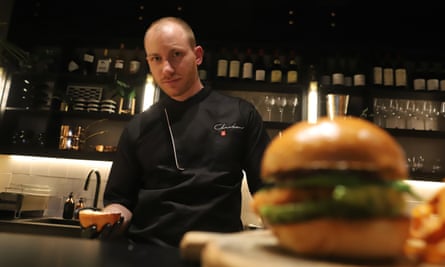
The result is the signature dish of a new undertaking in Israel, the Rooster, the world’s initially cultured meat restaurant expertise. Even now shut to the public owing to coronavirus limits, the eatery in the vicinity of Tel Aviv opened its doors to the Guardian for the initial personal go to by a journalist.
Advocates for the engineering argue that if cultured meat can turn out to be reasonably priced it will be revolutionary, and not just in its opportunity to end, or at minimum substantially cut again, the meat trade. Cultured meat needs no antibiotics or drugs.
Critically, just one study advised it could probably be produced with 96% decrease greenhouse gasoline emissions and 99% significantly less land – even though some animal legal rights activists argue it perpetuates an unhealthy obsession with taking in animals.
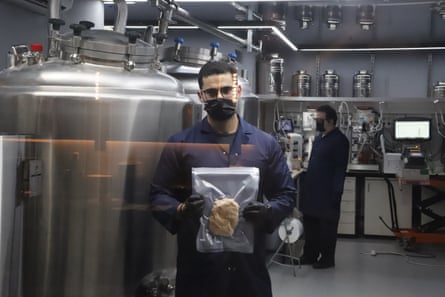
At the Hen, bottles of red wine line the partitions, black stools surround round tables, and the heat glow of hanging bulbs lights the restaurant. The complete back again wall is manufactured of glass. Behind it is the manufacturing facility in which lab-coated scientists wander about involving significant metal vats. It is petri-dish-to-table company.
“The meat was made on the other facet of the glass. That’s real regional creation of meat,” jokes Ido Savir, CEO of the restaurant’s mum or dad company, SuperMeat.
The breaded patty is deep-fried in oil, before getting put on a sweet brioche bun, flavoured by wasabi and chilli mayonnaise, with a side of sweet potato chips. Related to quite a few hen burgers, it breaks and flakes when pulled aside and is really tender. It tastes, at minimum to this reporter, like a chicken burger.
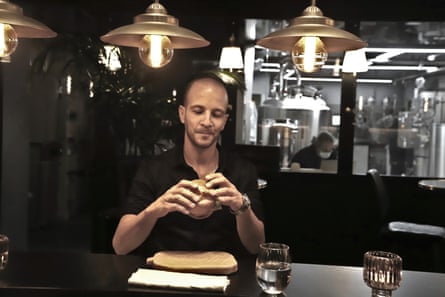
Halevy, who also holds the position of head of solution at SuperMeat, points out that muscle cells in a natural way deal when they are grown, creating the fibres that outcome in the flakes of the burger that you would assume.
Whilst Halevy claims he could make a recreation of a rooster breast – with extended fibres and a dryer, denser bite – a person was not supplied, and other people in the field have claimed a fillet is significantly more challenging to make exterior the chicken.
For now, like other individuals in the nascent industry, the start off-up is focused on minced rooster. It is aiming to promote to meat organizations that usually reprocess chicken anyway, for illustration, into patties and nuggets.

Contrary to reared poultry, this meat is built bespoke. It can be drastically altered in the course of action, dependent on how it is encouraged to mature (in any form) and what it is utilized in the “feed” – the h2o, sugar, amino acid, protein and vitamin bathtub the meat grows in.
This can lead to stunning prospects. “We can have one thing that is between a breast and a thigh,” claims Halevy. Meat from animals that are endangered could be cultured without harming them, he adds.
Less than the right situations, each 12 hours the range of cells will double, Halevy states: “If you harvest half the meat on just one working day, you will get the identical amount of money the next working day.”
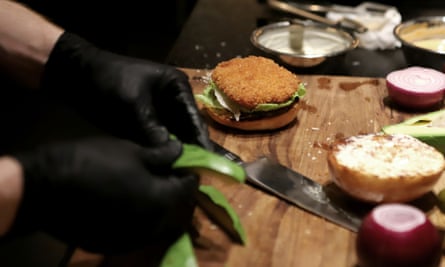
Similar to other patties, this kind of as the McChicken, the burger is not just meat but seriously supplemented with other substances to increase texture and flavour. About 50% is plant-based mostly proteins, with additional seasonings.
And like the hen it serves, the cafe is not totally fledged. There is nevertheless no regulation all-around cultured meat in Israel, this means SuperMeat simply cannot charge prospects. Even so, it intends to invite customers of the public to try its dishes, to develop a buzz. A waiver agreeing to “voluntarily believe any and all risks” must also be signed.
Savir says the intention is to take cultured meat from a scientific “dream” to actuality, adding he thinks it will be 1 or two many years in advance of he can promote it.
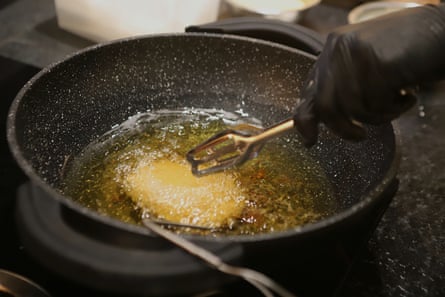
“This is our platform to have the first engagement,” he suggests. As nicely as the general public, likely customers from meals companies wanting to develop into cultured meat will be invited.
The business was given a sizeable improve this 7 days when Singapore grew to become the 1st point out to approve the sale of cultured meat for a “chicken bites” item, which is created applying very similar techniques. The US-primarily based business that tends to make the nuggets, Consume Just, claimed they would be offering to an unnamed restaurant in Singapore.
Savir says the output price tag of his rooster burger is $35, which seems superior but is radically significantly less than it was a few years back. In 2013, a Dutch pharmacologist, Mark Put up, designed record by feeding on the first lab-grown beef burger. It price tag about £225,000.
SuperMeat anticipates cultivated meat will get more cost-effective as the industry grows, maybe reaching value parity with farmed meat in six to seven yrs. Lowering the value of the “feed” is vital, Savir claims, which accounts for about 70% of charges, very similar to typical meat.
Even if people ended up to reject it, cultured meat advocates say it could be utilized for other uses. In the US, dogs and cats are estimated to take in about a quarter of all meat. Potentially the most important hurdle, nevertheless, is the “yuck” factor. For several, the concept of lab-developed flesh stays unenticing, or even blasphemous.
“We’re not interfering. We’re just accomplishing it in a unique way,” claims Savir. “Ice produced in a freezer is not interfering with God – it’s employing engineering to do it a lot more competently.”